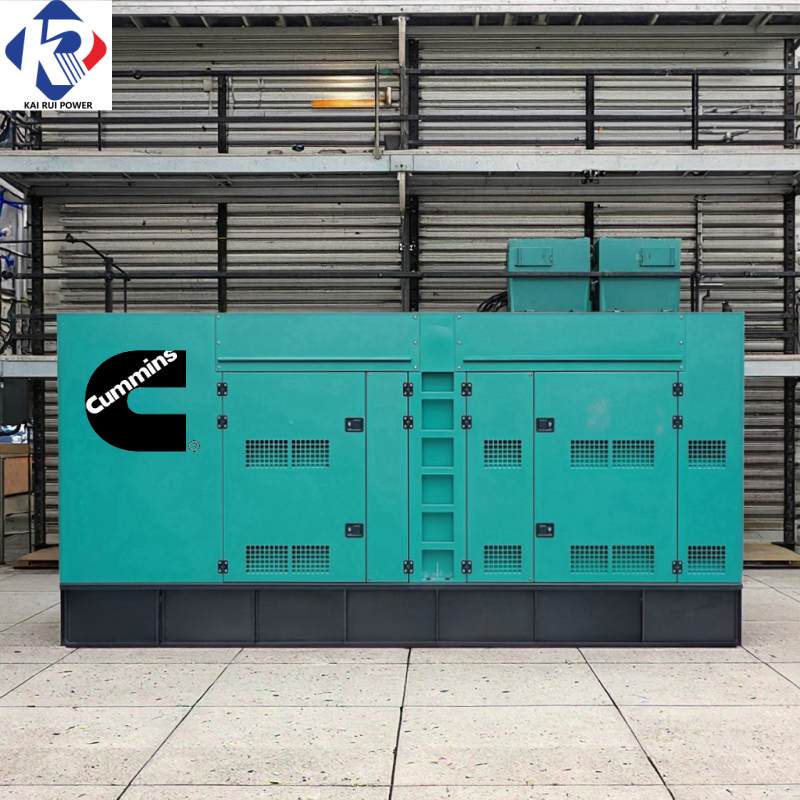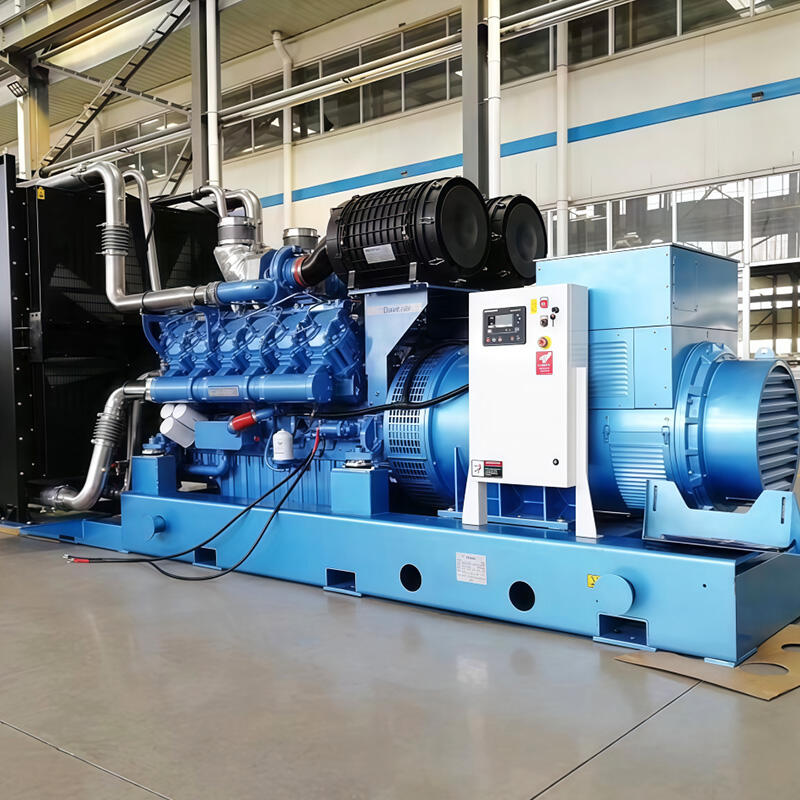Understanding Power Capacity and Matching Wattage to Your Needs
Continuous vs. Surge Wattage: What Each Means for Performance
When looking at how much power a generator needs to handle, there are basically two main things to consider: continuous wattage, which is what's needed when things are running normally, and surge wattage, that initial spike of power required to get motor driven appliances going. Take a look at common household items like fridges or air conditioners, they actually pull way more electricity when first turned on than when running regularly. Some studies show these devices might need anywhere from double to triple their regular wattage just to kickstart those motors. A typical fridge that runs on around 600 watts day to day could still need something like 1800 watts when it starts up. And window mounted air conditioners? They're notorious for needing between 2000 and even 4500 watts at startup, even though they don't consume nearly that much once they're actually cooling the room according to Thompson Power Systems research from last year.
Common Household Power Requirements by Appliance
- Refrigerator: 600–800 running watts / 1,800–2,400 surge watts
- Window AC Unit: 1,000–1,500 running watts / 3,000–4,500 surge watts
- Sump Pump: 800–1,300 running watts / 2,400–3,900 surge watts
- LED Lights: 10–20 watts each (no surge)
How to Calculate Total Power Demand for Proper Sizing
- List all essential devices and their running wattages
- Identify the highest surge wattage from motor-driven appliances
- Add total running watts + peak surge wattage
- Apply a 20% safety buffer: (Total × 1.2)
For instance: 3,500 running watts + 4,500 surge = 8,000-watt requirement — round up to a 9,600-watt generator. This buffer helps prevent overloads, especially in high-torque applications when using diesel generators. Always verify appliance labels and test your load configuration seasonally using step-by-step guides available through trusted sources.
Case Study: Running Essential Home Systems on a 5,000-Watt Generator
During a recent 12 hour power cut, a 5000 watt generator kept things running pretty well. The fridge stayed cold at 800 watts, fifteen LED bulbs provided lighting totaling around 200 watts, phone charging ports worked fine at 100 watts, and crucially the sump pump operated normally despite needing 1300 watts. But when someone tried to turn on the central air conditioning system rated at 3500 watts, the generator immediately shut down due to overload protection kicking in. This shows why people need to carefully calculate what their generator can actually handle continuously versus those short bursts of power required by certain appliances when they first start up.
Comparing Generator Types: Portable, Inverter, Standby, and Solar Options
Portable vs. Inverter vs. Standby Generators: Key Differences and Use Cases
Portable generators ranging from around 1000 to 16000 watts typically burn either gas or propane and work great when folks need power just for a few days at camping spots or construction areas. Then there's standby generators which sit between 10k and even over 60k watts plus, running on natural gas or diesel fuel. These bad boys kick in automatically whenever the main power goes out, so they're perfect for keeping lights on in houses during storms or maintaining operations at small businesses. For those who want something different, inverter generators come in sizes from roughly 1000 up to 7000 watts. They produce cleaner electricity that doesn't mess with delicate equipment like computers or medical devices, plus they get better mileage from their fuel and operate much quieter than traditional models. Many people find these particularly handy for tailgating parties or weekend trips where noise levels matter.
| Feature | Portable | Standby | Inverter |
|---|---|---|---|
| Typical Wattage | 1,000–16,000W | 10,000–60,000+W | 1,000–7,000W |
| Fuel | Gasoline/Propane | Natural Gas/Diesel | Gasoline/Propane |
| Portability | High | Stationary | Moderate |
| Best For | Temporary outages | Whole-home backup | Sensitive electronics |
Inverter Generators and Clean Power for Sensitive Electronics
Inverter generators generate electricity with under 5% total harmonic distortion (THD), which means they work safely with sensitive electronics like laptops, phones, and even medical gear. These units have engines that change speed depending on what's being powered, so they stay quiet at around 45 to 60 decibels while burning about 30% less fuel compared to regular generators. Take a 2,000 watt model for example it should keep a fridge running and charge several gadgets for roughly 8 to 12 hours before needing refueling. That kind of runtime makes them pretty handy for weekend trips or emergency backup situations.
Solar Generators: Eco-Friendly but Limited Runtime
Solar generators ranging from about 500 watts up to 12 kilowatts work by combining solar panels with battery storage systems to deliver quiet power without producing emissions. These units are pretty much maintenance free and good for the environment too, but how long they last depends heavily on available sunlight and the size of the battery pack installed. Take a standard 1,000 watt model for instance it might keep a fridge running for around four to maybe six hours before needing recharge. However folks often find that adding extra solar panels or going for a hybrid setup helps stretch the power supply when there's an extended blackout situation happening.
Evaluating Fuel Types: Gasoline, Propane, Diesel, and Solar Efficiency
Fuel Availability and Storage: Gasoline, Propane, and Natural Gas Compared
Regular gasoline sits around pretty easily at most gas stations, though it starts going bad after about six to twelve months if not treated properly for storage. That means anyone wanting to keep fuel for longer periods needs to take special precautions. Propane tells a different story altogether. When kept in those sealed metal tanks, it basically lasts forever, making it great for people who only need fuel seasonally or when emergencies hit. Natural gas works well too since it flows continuously through those underground pipes right into homes and businesses. But there's a catch here - when power grids go down during storms or other disasters, natural gas stops flowing unless someone has some kind of generator or alternative setup running locally. Where folks live makes all the difference in what options they have access to. City dwellers typically enjoy constant natural gas service thanks to established infrastructure networks. Meanwhile out in the country, many households depend on regular propane truck deliveries that sometimes get held up by weather conditions or road closures during critical moments.
| Fuel Type | Availability | Storage Complexity | Shelf Life |
|---|---|---|---|
| Gasoline | High | Moderate | 6-12 months |
| Propane | Moderate | Low | Indefinite |
| Natural Gas | Low | None (utility-fed) | Continuous supply |
Diesel Generators for Sale: Durability, Efficiency, and Market Trends (2024)
When it comes to industrial power needs, diesel generators still hold their ground because they run about 15 to 30 percent more efficiently on fuel compared to alternatives, plus their engines tend to last much longer around 8,000 to even 15,000 hours of operation. Looking at what's happening in the market right now for 2024, there seems to be growing interest specifically in those Tier 4 Final compliant models from diesel manufacturers. Construction sites and hospitals are really driving this trend as regulations get tighter. According to Industrial Power Trends 2024 report, almost 6 out of every 10 commercial generators sold last year were diesel powered. The catch? These machines come with a hefty price tag ranging somewhere between $2,500 all the way up to $15,000 which is keeping them mostly out of backyard garages and home workshops despite their advantages.
Long-Term Fuel Costs and Consumption by Generator Type
Operating expenses vary significantly:
- Diesel: With 138,700 BTU/gallon, diesel provides 10–15% longer runtime than gasoline and costs $0.18–$0.25/kWh, making it cost-effective for heavy usage.
- Propane: Priced at $2.50–$3.50/gallon (2024 average), it requires 1.5× more volume than gasoline for equivalent output but burns cleaner, justifying its 20–30% premium in regulated areas.
- Solar: Eliminates ongoing fuel costs but requires a $3,000–$15,000 upfront investment and performs best in sunny climates.
Runtime, Noise Level, and Voltage Stability: Critical Hidden Factors
How Load Affects Runtime and Strategies to Extend Operation
The runtime gets shorter when there's more electricity being used. Generators running at around three quarters capacity tend to run out of fuel faster than ones working at half power, maybe even up to forty percent quicker depending on conditions. For better performance, focus first on what absolutely needs power and spread out when big power hungry things like fridges or air conditioners come on. Turning on energy saving settings for smart devices helps cut down total usage somewhere between ten and twenty percent, which means generators will keep going longer during those long power cuts we all dread so much these days.
Noise Levels Explained: Decibel Ratings Across Generator Types
Most portable generators put out around 65 to 75 decibels when running, which is roughly as loud as a vacuum cleaner. The newer inverter models tend to be much quieter though, operating between 50 and 60 dB, actually lower than regular conversation levels. Standby generator systems generally fall within the 60-70 dB range, although they're often placed outside homes or in garages where noise isn't such an issue. For folks living in cities or other places where noise matters, going for something below 65 dB makes sense. Many people also install special sound dampening enclosures to keep things quiet enough to meet local ordinances while still having reliable backup power during outages.
Voltage Output Stability for Protecting Sensitive Devices
Electronics including laptops, smart home devices, and critical medical gear can get damaged when voltage levels swing too far from normal, specifically anything outside the ±5% range. Generators that come with automatic voltage regulation or AVR technology keep their output stable around 2-3% variation even if there's a sudden spike or drop in demand. Some premium generator models go further by incorporating multiple stages of voltage filtering which cuts down on those annoying electrical distortions by about 70% over standard versions. So when shopping around for diesel generators, look seriously at models with built-in AVR systems. These will deliver cleaner, more dependable power that protects sensitive equipment without all the wild swings that cheaper alternatives tend to produce.
FAQ
What is the difference between continuous and surge wattage?
Continuous wattage refers to the power a generator can provide consistently during regular operation, whereas surge wattage is the extra power needed momentarily when starting motor-driven appliances.
How can I calculate my total power demand to size a generator properly?
List all essential devices and their running wattages, identify the highest surge wattage required by motor-driven appliances, add total running watts to the peak surge wattage, and apply a 20% safety buffer to prevent overloads.
Are inverter generators suitable for sensitive electronics?
Yes, inverter generators provide clean electricity with less than 5% total harmonic distortion, making them suitable for sensitive electronics like laptops, phones, and medical devices.
How does fuel type affect generator performance and storage?
Gasoline is widely available but degrades over 6-12 months, while propane lasts indefinitely in sealed tanks. Natural gas offers a continuous supply but stops flowing during grid outages. Diesel offers efficiency but is costly and not as accessible for residential use.






